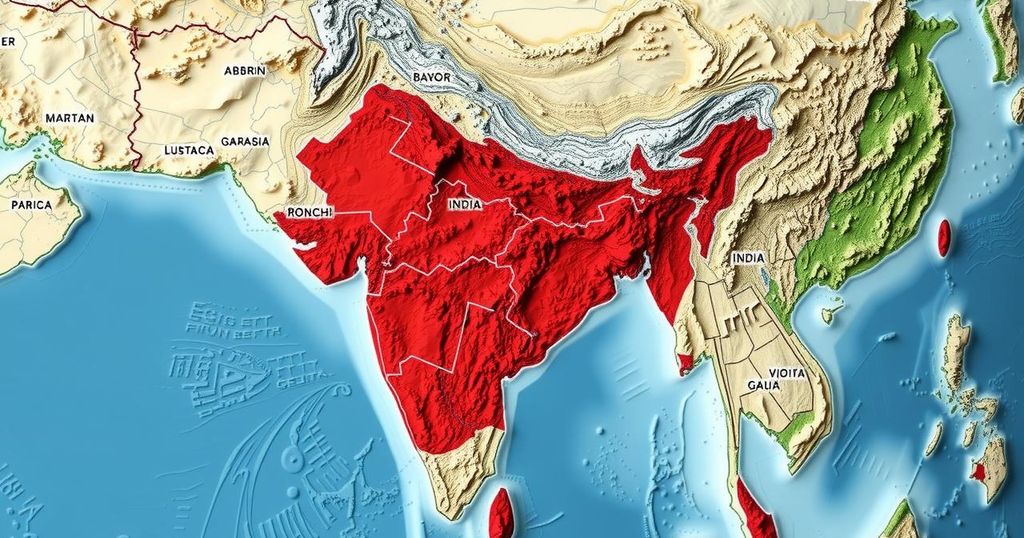India’s Seismic Risk: Standing Among the World’s Most Earthquake-Prone Nations

On January 7, 2025, a powerful 7.1 magnitude earthquake struck near the Nepal border, felt across northern India, particularly in Bihar. This event marks the strongest quake in the area since the 2015 Nepal disaster. India ranks as the seventh most earthquake-prone country, with 58 significant earthquakes recorded since 1990. The country’s susceptibility stems from its geography and historical seismic activity, particularly in the Himalayan region.
As the new year began, a powerful earthquake struck southern Tibet, impacting northern India, particularly Bihar, where tremors measured 7.1 on the Richter scale. This seismic event, occurring on January 7, 2025, was significant as it marked the strongest quake in the region since the devastating 2015 Nepal earthquake, which caused extensive destruction and loss of life. The earthquake’s epicenter was located near Lobuche, close to the Nepal-Tibet border, highlighting the region’s seismic vulnerability.
Earthquake activity is prevalent in several Asian countries. According to data from the United States Geological Survey (USGS), Indonesia remains the most earthquake-prone nation, experiencing over 2,200 seismic events of magnitude 4 or greater. However, an analysis from the National Oceanic and Atmospheric Administration (NOAA) profiled the most impactful earthquakes from 1990 to early 2024, revealing China as the country suffering the most major earthquakes (186 events), followed by Indonesia (166 events) and Iran (109 events).
Notably, India ranks as the seventh most earthquake-prone country, with 58 significant earthquakes recorded during this period. This vulnerability is attributed to India’s geographical location at the intersection of tectonic plates, which predisposes the country to seismic risks. Approximately 59% of India’s territory is at risk for moderate to severe seismic activity, significantly impacting densely populated regions, particularly in the Himalayas, known for potent earthquakes exceeding magnitude 8.0. Past major earthquakes in the area include the Shillong earthquake of 1897 and others, underscoring the ongoing seismic threat.
India’s position, built on complex geological structures and situated at the convergence of multiple tectonic plates, makes it particularly vulnerable to seismic threats. The region’s topography and unregulated urban development exacerbate the risk associated with earthquake events. Historical records indicate that significant earthquakes have occurred in India, with particular frequency in the Himalayan region, where the convergence of tectonic activity remains potent. Countries such as China, Indonesia, Japan, and Iran have consistently experienced devastating earthquakes, with considerable financial and human losses. Studies by NOAA and USGS illustrate the substantial impact these seismic events have had on these nations, shaping their disaster preparedness and response strategies. Consequently, analyzing past occurrences aids in understanding future risks and necessary safety measures for affected countries.
In conclusion, India is indeed among the countries significantly impacted by earthquakes, ranking seventh globally for the number of major seismic events recorded between 1990 and 2024. With its geographical vulnerabilities and a history of devastating quakes, especially in the Himalayan region, it is crucial for India to enhance its infrastructure and disaster preparedness strategies to mitigate the risks associated with earthquake activity. Continued monitoring and research are essential to safeguard the nation’s population and resources against future seismic events.
Original Source: indianexpress.com








